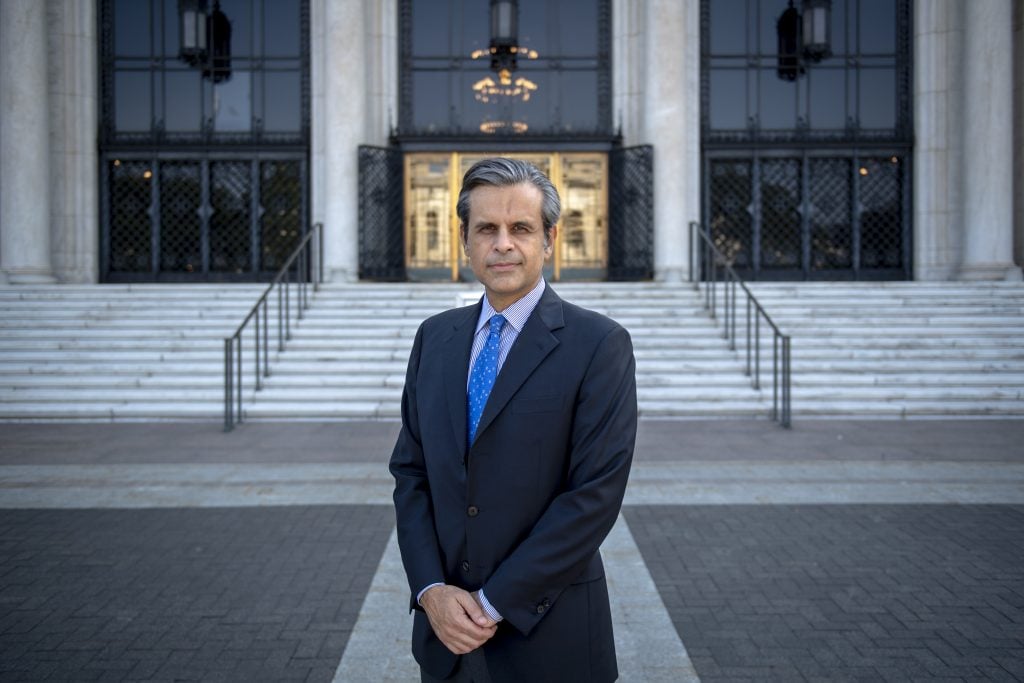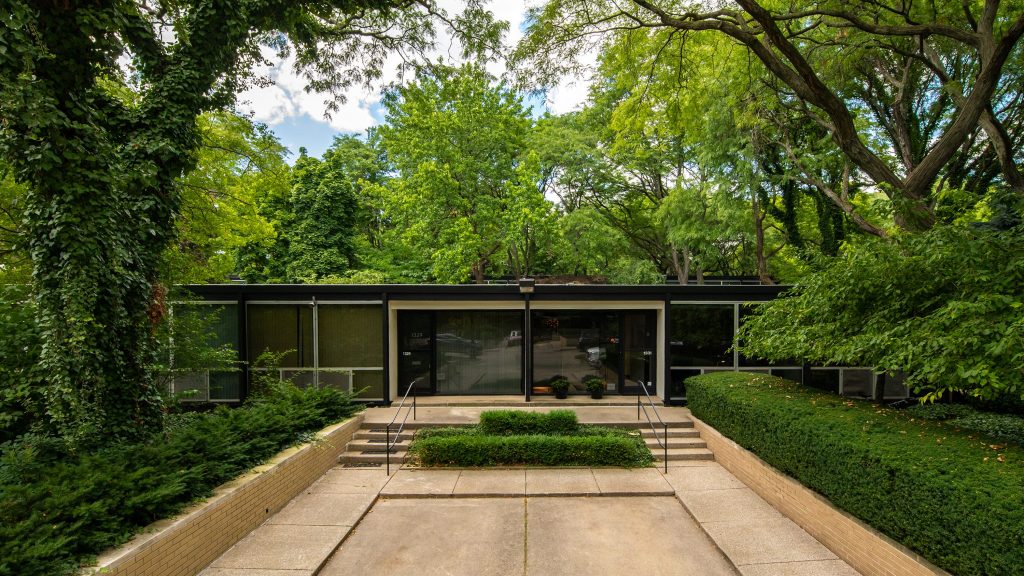People
The Art World at Home: Detroit Institute of Arts Director Salvador Salort-Pons Is Kicking Off a Show About Car Culture and Enjoying Leftover Paella
We caught up with the museum director about his life in Detroit.

We caught up with the museum director about his life in Detroit.

Artnet News

Salvador Salort-Pons, the director of the Detroit Institute of Arts, is fascinated by the cosmos: the vastness of it, our tiny place in its enormity, and the boundlessness of its reach. The museum executive, who just oversaw the opening of a show about the Motor City’s legacy of car design, says it helps keep him grounded.
We caught up with Salort-Pons as the year came to a close to hear about the exhibition the museum just opened, how he spends his days, and why leftover paella is better than a just-cooked batch.
What are you working on right now?
We are currently working on a number of projects, such as our major exhibition, “Detroit Style: Car Design in the Motor City, 1950–2020”; making pandemic-related adjustments to the services that we are required to provide annually (school programs, senior programs, and community partnerships) to the counties that fund the museum through property taxes; and the creation of a digital media department.
Our top priority for the organization, however, is the planning and implementation of our Inclusion, Diversity, Equity and Access (IDEA) initiative. Melissa Peña Gallis, our executive director [for] talent and culture, is leading this initiative, and she is working very closely with me and our consultants, the Kaleidoscope Group.
Walk us through the when, where, and how of your approach to this project on a regular day.
I usually start my day at around 5 a.m. I drink a coffee and do my morning meditation. Around 7 a.m., I read the local, national, and Spanish news, and then I check my email and do any pending writing. My meetings start at 8:30 a.m. The IDEA initiative is infused into everything we do, so it must permeate our exhibitions, public programs, school programs, etcetera, and of course, our governance. Any actions and decisions I take, I test them against our IDEA plan. If they align, I move forward, and if they don’t, I rethink and adjust my actions until I make them align.
If it is a Tuesday, we have our regularly scheduled executive team meeting, and there, among other things, we review the status of this project across the organization. Later in the day, I touch base with our executive director of marketing and communications to discuss our IDEA social media postings for the week.
What is bothering you right now?
While we have been fortunate during the pandemic to avoid any layoffs or furloughs, the short- and long-term impacts of COVID on the health of our community are among my greatest concerns. Thousands in our community face job loss, food insecurity, and the loss of family and friends. Communities of color are particularly hard hit, especially in this region.
We are also seeing huge challenges in delivering education for all ages during COVID. It is not only that a high percentage of the population in Detroit does not have internet access, but also the fact that families have to manage their children’s education at home while also doing their own jobs and fulfilling other responsibilities.
I see the latter throughout our own staff. Moving forward, and once we start to see the pandemic under control, we need to think about how the museum could become a place for healing and community support through the day-to-day visitor experience, our public programs, and exhibitions.
What was the last thing that made you laugh out loud?
My cat, Sugimoto, is one of my greatest teachers and makes me laugh often. He always jumps on my desk while I am typing away on the keyboard, and he starts to nip at my wrists. He tries to get my attention, hoping to play. This always makes me laugh and reminds me that we tend to focus too much on our own things, neglecting the world around us, which is much more interesting and important.
Are there any movies, music, podcasts, publications, or works of art that have made a big impact on you recently? If so, why?
We don’t own a TV, but some evenings, I watch science documentaries on an old laptop that we have. I am particularly interested in those that discuss general relativity and quantum mechanics. I highly recommend the documentaries hosted by theoretical physicist Jameel Sadik ‘Jim” Al-Khalil; specifically a two-part one titled Everything and Nothing.
At the beginning, standing on a deserted sandy beach, Al-Khalil says: “Imagine that our sun is just the size of a single grain of sand. Our sun is just one of a multitude of stars, it is surrounded by about 200 billion of them, in our Milky Way galaxy alone. Our sun is just a speck in the vast beach of stars. The Milky Way galaxy is, in itself, one of 100 billion galaxies scattered throughout the Cosmos. It has been estimated that there are more stars in the Universe than there are grains of sand on all the beaches in all the world. Just think about that for a moment.”
And I think about this every day. It grounds me, helps me gain perspective on what our life is, as I manage daily challenges and opportunities. This documentary is beautifully made and communicates very complicated ideas in a very simple and accessible way. It helps raise awareness of who we are and where we are in time and space.

Home
What’s your favorite work of art in the house and why?
My favorite work of art in the house is the house itself, in which I live with Alex, my wife. We live in Lafayette Park in Detroit, where Ludwig Mies van der Rohe built a modernist residential development in the late 1950s. We live in one of the courtyard units, where all the outside walls are made of glass from top to bottom. I have heard Detroiters called these units “the glass houses.”
I love the human scale and feel of the space, its minimalist design, with long horizontal and shorter vertical lines, which infuse a sense of calmness and peace throughout, while the large transparent peripheral walls connect the interior with the exterior seamlessly.
The outside becomes part of the inside and vice versa and beautifully defies the understanding of space. This home is especially inspiring for us.
A couple of years ago, I read that Martin Luther King used to sip Pepsi in the basement of this unit whenever he visited Detroit and that a number of Civil Rights initiatives were first discussed within these walls. At the time, our Mies unit belonged to his friend Judge George W. Crockett Jr, a civil rights crusader who, among his many accomplishments, helped to organize Michigan’s first integrated law firm. Judge Crockett, who also served as a US congressman, led many of the efforts to provide legal protection to participants in the civil rights movement in the 1960s.
What is your favorite part of your house and why?
Believe it or not, the doorways between rooms! I like the fact that the doors go from floor to ceiling. This creates an interesting visual effect on the living space. It makes one feel that the ceilings are higher than they actually are. It also provides a better visual unity of the walls around the space.
Are there any causes you support that you would like to share? If so, what, and why is it/are they important?
Early on in the pandemic, we at the DIA partnered with a local food-rescue organization called Forgotten Harvest. Together we provided food boxes and art projects for weekly pickup at the DIA’s parking lot, offering, hopefully, some relief for families during the shelter-in-place order.
At home, we are avid composters and take our weekly compost to the gardens behind Gleaners, another community food bank. In the society of overabundance in which we live, I am always very cautious in making sure we don’t waste any food at home and what little we don’t use goes to helping create healthy soil for future food.
What is your guilty pleasure?
I have two guilty pleasures. I am addicted to eating olives. I have not met an olive I don’t like. And once I am done with the olives, I like to search the refrigerator for leftovers. As a Spaniard with family roots in Valencia, my favorite leftover is paella from yesterday’s lunch, warmed up slowly. The taste is simply better, as time has wisely blended together the flavors of all the ingredients.
What’s going on in the kitchen these days? Any projects? And triumphs or tragedies?
One of my favorite vegetables is collard greens. I experiment cooking with them. Once cleaned and chopped, I sauté them with olive oil, garlic and fresh jalapeños. Sometimes I cook them with spicy chicken sausage or chorizo. They are also very good with garlic and eggs, in the form of a Spanish omelet. I often experiment with creative culinary moments as I rethink and re-cook leftovers.
Which two fellow art-world people, living or dead, would you like to convene for dinner, and why?
After living in Detroit and working at the DIA, I wish I could have dinner with Frida Kahlo and Diego Rivera when they both were at the DIA. He was painting the Detroit Industry murals, and she was starting her career as an artist. I would ask him about his experiences in Italy, as well as his relationship with Picasso. I would discuss Frida’s artistic aspirations and ideas with her.
Both have had a huge impact on Detroit’s culture, and I would like to know how they were received by the autoworkers and if they had any influence from them while creating their art. At that time he was famous, and she was unknown. Today Frida is a world-renowned figure, bigger than Diego. Finally, I’d like to walk them through our “Detroit Style” exhibition to see what they think of the cars designed in Detroit after their time here.